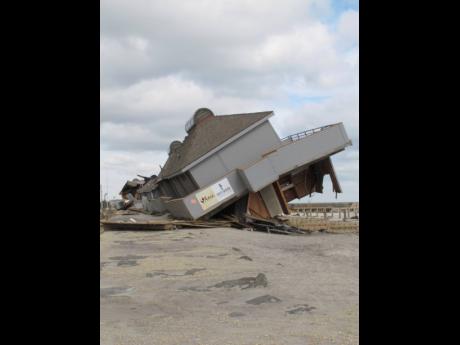Roubini and Bundy | What climate finance needs
As we move from UN Climate Week to COP28 in Dubai later this year, we must stop the ‘greenwishing’ and ‘greenwashing’ and start thinking about the instruments that will enable the private sector and private investors to channel more capital towards climate resilience and sustainable development.
While the public sector has an important role to play in this respect, scalable solutions require significant commitments of private-sector resources. With climate change already wreaking havoc on poor and rich countries alike, unlocking this largely untapped pool of capital has become an urgent priority.
Yet as matters stand, many investors associate climate-centric investments with “social impact” and reduced profitability. While sophisticated investors have the means to deploy their capital profitably towards decarbonisation, the energy transition, and other climate-related sectors, such investments tend to be illiquid. They remain tightly wound up in private equity funds and thus inaccessible to the ordinary investors and savers who are most exposed to climate-driven food, water, and energy insecurity.
The solution is to create climate investments that are profitable, liquid, and accessible to all. COP28 offers an opportunity to rethink how we deliver such market solutions and how we can harness digital innovation to scale up promising models. To mobilise capital at scale, we must draw on the global savings of individual investors as well as institutions such as pension funds, insurers, and sovereign funds. Risk diversification can be achieved through retail-friendly, liquid, easily accessible instruments such as ETFs or exchange-traded funds.
The sensible way to construct a profitable, long-term, climate-aligned, widely accessible investment strategy is to develop a diversified portfolio of assets that directly or indirectly support climate financing. For investors with a long-term horizon, a portfolio that meets these requirements should be composed of three main asset types.
The first is climate-resilient real estate and infrastructure – meaning assets in weather-proof, stable geographies that have low climate exposure. Real estate and infrastructure valuations in such regions are poised to appreciate significantly on the back of population shifts from high-risk areas across the Southern Hemisphere to more resilient communities in North America, Northern Eurasia, and select geographies in the Global South.
Carefully selected REITs or real estate investment trusts and exposure to greenfield developments through ETFs are two ways to secure reliable returns from climate-adaptation efforts. And as an added bonus, such investments offer broader economic and societal benefits, including productivity growth, job creation, and the provision of employment and housing for migrating populations.
The second component is green commodities. An orderly transition to a more resilient future requires massive investments not only in energy, food, and water assets, but also in the metals and critical minerals used in renewable energy and electric vehicles. These include commodities such as soy, wheat, copper, rare-earth elements, cobalt, lithium, and so forth. To avoid supply bottlenecks and ‘greenflation’, that is, inflation caused by decarbonisation efforts, we urgently need to boost production and lower the cost of securing these commodities.
Finally, a sensible climate-aligned portfolio should include assets that provide a hedge against inflation and geo-economic risks such as short-term and inflation-indexed sovereign bonds and gold. Not only does the negative correlation between these assets and other climate-related investments offer extra ballast, but it also provides liquidity and low volatility to meet the needs of many individual investors, pensioners, and savers. And again, there is an added bonus: greater investments in inflation-proof sovereign assets will allow governments to do more to finance the green transition.
To achieve maximum impact, these climate investment instruments must be made available to the average investor on liquid, low-cost terms. While ETFs can help, not everyone has a brokerage account or even a bank account. We tend to overlook the unbanked populations of the Global South as well as the younger generations for whom digital assets may be more appealing. According to the World Bank, 1.4 billion adults are unbanked globally, and the share of the unbanked population exceeds 50 per cent in several Middle Eastern, Asian, and African countries with larger youth or ‘digital native’ populations.
Owing to these factors, we will need to come up with a digital, tokenised representation of all the aforementioned climate-investment solutions, both to achieve global scale and to protect those most at risk of climate change and fiat currency debasement.
But digital assets can offer a viable solution only if they are backed by real-world physical and financial assets. Mitigating speculation risks and preserving liquidity during crises is crucial to ensure that these do not become yet another form of fundamentally worthless crypto vaporware.
To build climate-resilient communities, encourage cross-border public-private partnerships, secure critical green supplies, and accommodate climate-driven population shifts around the world, policymakers and asset owners urgently need to rethink how we channel capital at scale.
With climate-driven costs escalating rapidly, innovation – both technological and financial – remains the most powerful tool at our disposal. With COP28 approaching, there is no more time for temporising and empty green-wishing.
Nouriel Roubini, professor emeritus of economics at New York University’s Stern School of Business, is co-founder and chief economist at Atlas Capital Team and author of Megathreats: Ten Dangerous Trends That Imperil Our Future, and How to Survive Them. Reza Bundy is co-founder and CEO of Atlas Capital Team. © Project Syndicate 2023 www.project-syndicate.org


